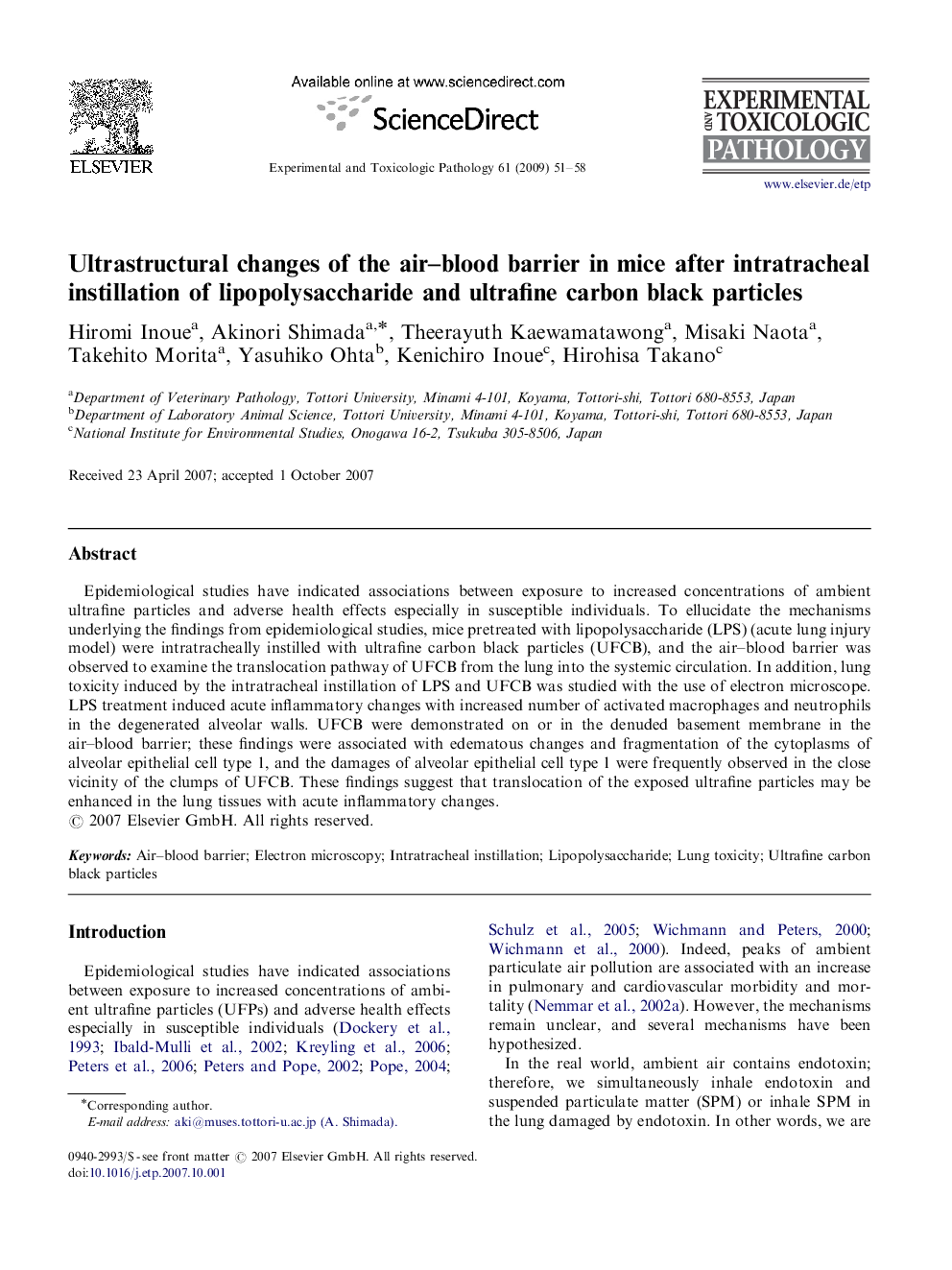| Article ID | Journal | Published Year | Pages | File Type |
|---|---|---|---|---|
| 2499091 | Experimental and Toxicologic Pathology | 2009 | 8 Pages |
Epidemiological studies have indicated associations between exposure to increased concentrations of ambient ultrafine particles and adverse health effects especially in susceptible individuals. To ellucidate the mechanisms underlying the findings from epidemiological studies, mice pretreated with lipopolysaccharide (LPS) (acute lung injury model) were intratracheally instilled with ultrafine carbon black particles (UFCB), and the air–blood barrier was observed to examine the translocation pathway of UFCB from the lung into the systemic circulation. In addition, lung toxicity induced by the intratracheal instillation of LPS and UFCB was studied with the use of electron microscope. LPS treatment induced acute inflammatory changes with increased number of activated macrophages and neutrophils in the degenerated alveolar walls. UFCB were demonstrated on or in the denuded basement membrane in the air–blood barrier; these findings were associated with edematous changes and fragmentation of the cytoplasms of alveolar epithelial cell type 1, and the damages of alveolar epithelial cell type 1 were frequently observed in the close vicinity of the clumps of UFCB. These findings suggest that translocation of the exposed ultrafine particles may be enhanced in the lung tissues with acute inflammatory changes.
